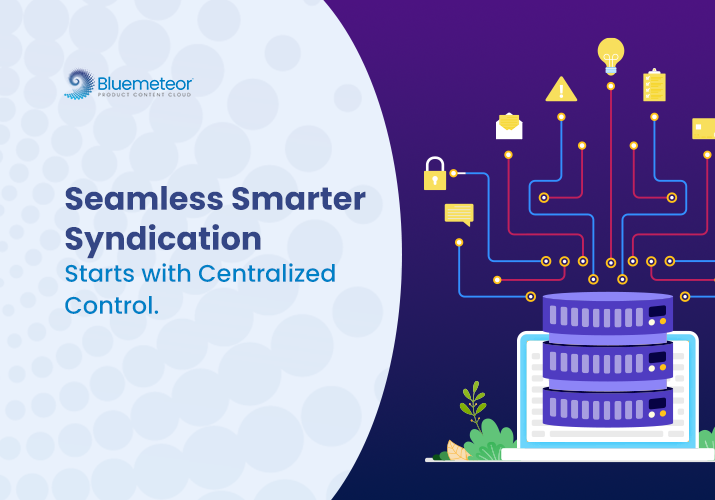Product Data Consistency and Changing Formats: A Challenge for Modern Businesses

Product data consistency means maintaining uniformity, coherence, and accuracy of this data across all sales channels. It guarantees the right data at the right time, providing a seamless customer experience.
In today’s rapidly evolving business environment, e-commerce and digital markets have become mainstream, catapulting companies towards diverse sales platforms, or omnichannels. Omnichannel selling implies the strategic presence of a business across different sales mediums.
Be it physical stores, mobile applications, online marketplaces, or social media, omnichannel selling embraces them all. The strategy involves presenting and selling your products seamlessly across these diverse channels.
The Importance of Product Data Consistency in Omnichannel Selling
The process of integrating product data from multiple sources like suppliers, datapools and systems is a challenging task. For instance, an eCommerce store sells cellphones. They get information from various phone manufacturers, different carrier databases, and systems like inventory management software.
This information needs to be consistent, accurate, and up-to-date for each product. But discrepancies can occur due to multiple formats, manual errors, and time delays. Such complexities make data onboarding an intricate process.
Why Is Product Data Consistency Crucial for Businesses?
Product data refers to every single detail regarding a product that helps the customer to make an informed buying decision. It includes SKU, product description, price, stock availability, images, videos, reviews, and any other feature which gives a comprehensive picture of the product.
Accurate product data lays a firm foundation for manufacturers, suppliers, and retailers, ensuring smooth operations and, most importantly, winning the customer’s trust. It functions as the common thread that strings these three stakeholders together.
For Manufacturers
Rapid dissemination of product data is imperative for fast-paced new product launches. It provides an improved channel-specific experience and bolsters sales. To achieve this, manufacturers must consistently syndicate their product information to an increasing number of outlets. These outlets include marketplaces, websites, data pools, and internal systems. Consequently, this ensures a seamless and effective flow of information across various platforms, driving both efficiency and growth.
Consistency in product data, particularly, ensures the absence of errors, inaccuracies, or outdated product information, building trust among consumers and retail partners.
For Distributors and Retailers
A standardized product catalogue replete with precise product details gives distributors and retailers the added advantage of credibility and time-efficiency. For them, data inconsistency is the bane that may hinder smooth operations.
With numerous disparate data sources pouring in from all directions – including industry data pools, supplier feeds, and internal sources of product information – maintaining data consistency might pose a serious challenge.
As a result, the ingestion of data must involve the steps of standardization and normalization. This process ensures that the data is rendered usable and consistent across platforms and use cases. Moreover, when you employ these measures effectively, you significantly reduce manual data entry, save time, and enhance productivity.
eBook
Modernising Product Information Management: Overcoming Legacy PIM Challenges
Learn the secrets to overcoming outdated PIM obstacles — transform your product management and stay ahead of the competition!

How can a modern PIM offer a solution for Product Data Consistency?
In simple terms, a Product Information Management (PIM) system is a centralized platform that consolidates and manages all your product information. As a result, with the assistance of PIM, data integrity and accuracy are ensured. Furthermore, it serves as the single source of truth for an organization.
By investing in a reliable and modern PIM system, organizations can address the following concerns:
- Exporting product data in different formats: With PIM, all product information can be accessed, managed, and disseminated through a centralized platform. By doing so, the possibility of inconsistencies, discrepancies, or miscommunications is substantially reduced.
- Onboarding new suppliers: When organizations rely on a manual system to bring in new suppliers, it can be tedious, slow, and prone to human error. PIM streamlines this process by ensuring that supplier information is correctly recorded and seamlessly integrated into the organization’s ecosystem.
- Changing formats when suppliers change data structures: Given that different suppliers might work with different data formats, it can become problematic when they decide to change data structures. In this situation, a robust PIM can step in by offering features that accommodate such format changes effortlessly. As a result, this helps avoid delays and mitigates risks.
- Personalizing or contextualizing product data: To keep up with the competition, personalization of product data is now a business necessity. By using PIM, organizations can access rich, complete, and contextual product data, creating better personalization strategies and enhancing customer experience.
Conclusion
In conclusion, given the rapid technological advancements and the ever-increasing volume of product data, manual management methods are increasingly unviable and risky.
To stay ahead in this competitive market, organizations must, therefore, adopt robust and modern PIM systems that not only address these concerns but also improve operational efficiency and, ultimately, boost profitability.
After all, in the age of information, proper management and efficient utilization of data can make or break a business.
Bluemeteor Product Content Cloud platform that enables companies and communities to leverage automation and data science to unify and manage complex product content to streamline product data lifecycles and build and deliver more meaningful product experiences at scale




